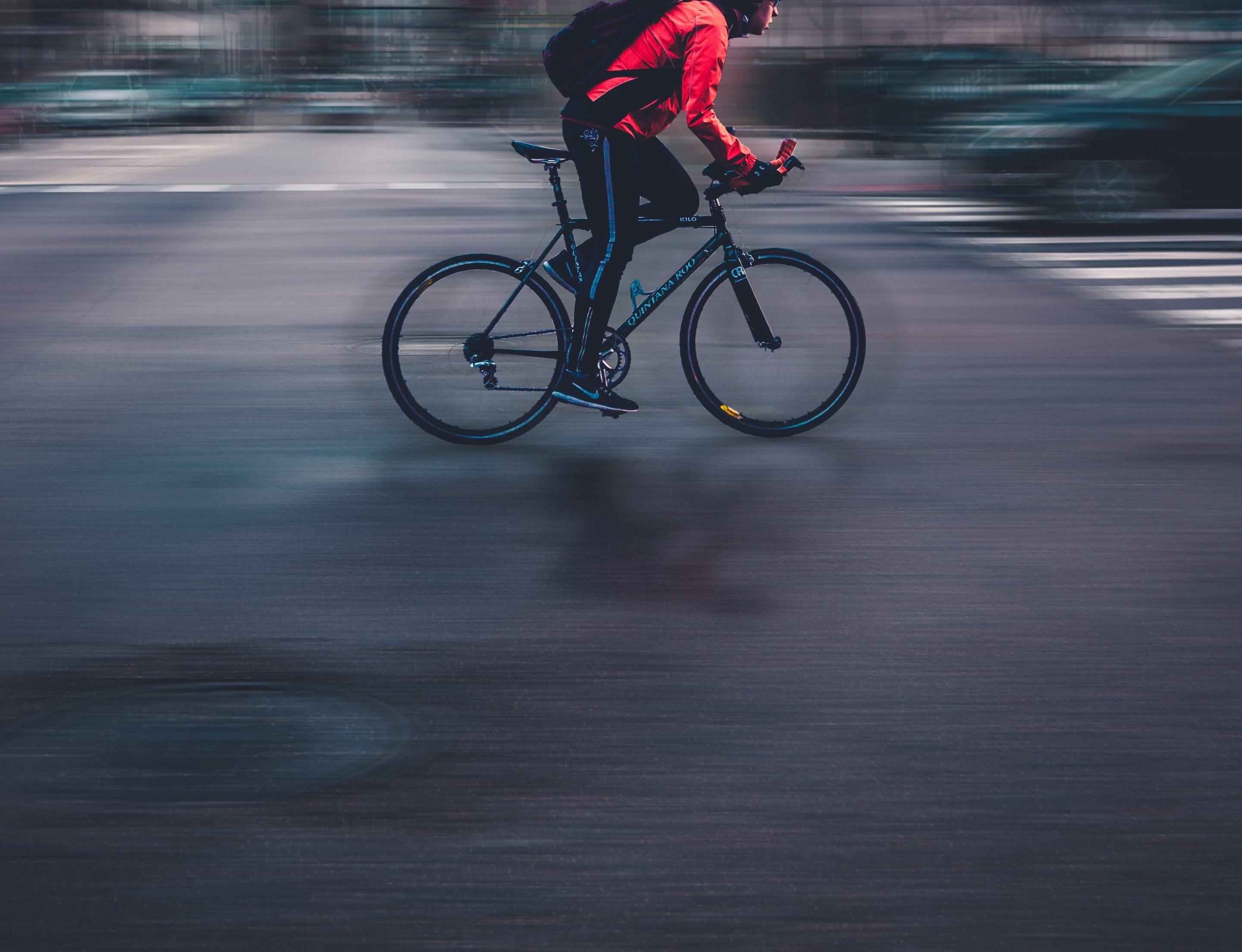This article originally appeared on Urban Phoenix and is republished with permission.
Most days, I attack my 3.6-mile morning commute by bike. I won’t bore you with why this is my preferred way to start the day, I’ll just tell you that I look at the sea of cars, speeding, honking, jockeying for position and snicker mildly, knowing I’m living the best kept secret.
While I love biking for transportation, I always emphasize the realities of being a bike in the road. Luckily, my commute is more than half on trail, but in those places where I “have to” share the road with motor vehicles, it’s always interesting.
If you think for a second that cars and bikes approach our roadways the same, or wonder why cyclists behave differently at intersections, let me go over an approach to a single intersection on bike in detail.

Let’s detail the photo above. On the far left is The Highland Crossing Trail, which, in this section, is a double-wide sidewalk. It connects with a trail that navigates through nearby Brighton Town Park and terminates at the Empire State Trail (which is also a part of my commute) to the south, and continues on a crushed-stone path just to the north. In this instance, a cyclist could take this sidewalk, press the crosswalk button and cross the street when the “walk” sign is on. This being said, many drivers make the left turn without yielding to bikes in the crosswalk, thus creating a dangerous point of conflict. Furthermore, if I use this route and cross the street here, I still need to press the crosswalk button once again on the other side to cross the other road and continue to the rest of the pathway. Essentially, if I follow the trail, I have to cross two streets instead of one, having to push a crosswalk button and wait both ways.
The alternative is to bike in the road here, which is what I do. It’s a lightly-traveled road, and I’ve never had an issue. But in referencing the above image again, something sticks out… in order to cross the perpendicular road and reconnect with the Highland Crossing Trail that will take me home, I essentially have to bike straight through the intersection and pick up the double-wide sidewalk seen behind the black SUV on the far right.
The problem is, there’s no “straight” lane in this intersection… it assumes that you, as a driver, will only want to turn left or right. And this is understandable, considering the road coming from the north is a limited access road that leads to a detention facility and the Empire State College parking lot. If I pick the lane on the left, I often wait behind an SUV, blocking other drivers coming from the opposite direction from seeing me traversing the intersection in a straight line. If I pick the right lane, I am often faced with a driver who wants to make the right on red, and is insistent that I move over so they can do so. So essentially, I have to create my own lane by stopping my bike in between the left and right hand turners, and gesture to the drivers across the intersection from me that I am going strait across to the sidewalk and eventual trail.
If you’re a driver, you choose lanes that travel left, right, center, etc., everything is clear. You are prioritized. You don’t have to push a button or worry about someone not seeing you. The light will change when it changes with no thought about who will see you.
But in this innocuous intersection that poses a world of convenience and safety considerations every time I cross it in bicycle, it’s a different story. And this is just one intersection of ambiguity that I and millions of other cyclists approach every day. These are the internal conversations we must have when approaching an intersection, simply because there are so few that are built with the cyclist in mind.
If you have ever wondered why cyclists make strange moves in the road, consider this example. We are constantly having to think about safety and practicality scenarios that drivers will never have to appreciate.






